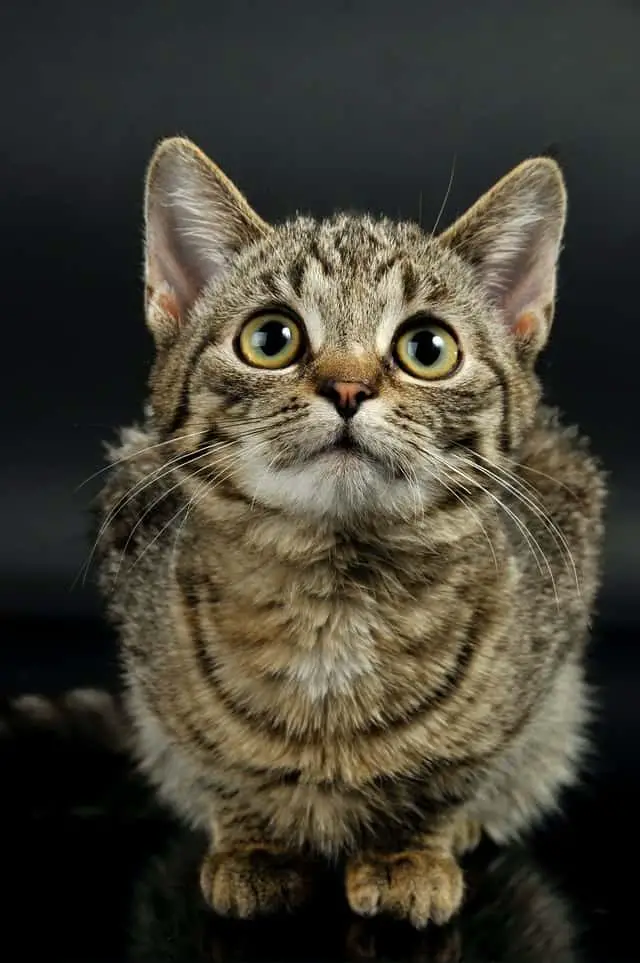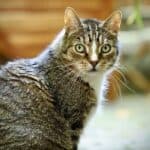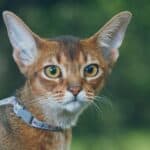
Marbled cat, a very rare feline as much as it is fascinating especially because of its fur. It was even considered extinct in the mid-2000s but reappeared in Malaysia between 2009 and 2010, it is still an animal that is difficult to spot and therefore also to study.
European marbled cat
Belonging to the Pardofelis family, this feline at first sight resembles the leopard, vaguely, as it has been possible to understand from the very few images that it has been possible to take over time. One of the most interesting dates back to 2003, but certainly not in Europe because these are not its areas. Sightings of marbled cat specimens have occurred in Australia and Suriname and also in Borneo.
Red marbled cat
More than red it would seem golden, because this marbled feline would seem to be more related to the golden Borneo cat than to other felines even if in appearance they are more similar to it.
Today in South and Southeast Asia of this species there are fewer than 10,000 units in groups of less than a thousand, its closest relatives are more numerous – the Asian golden cat and the Borneo golden cat – but it has separated about 9.4 million years ago.
In size it is similar to a domestic cat even if it can be seen that it is not also due to the tail which in effect is different. That of the marbled cat is longer and much thicker, not only for an aesthetic fact but for a matter of ballistics. The feline needs this because it uses it as a counterweight and is a very agile feline. It weighs between 2 and 5 kg, females are usually smaller, and is between 45 and 62 cm long, with a tail that can reach 55 cm.
Marbled cat: fur
The marbled cat’s coat is a sight or so it seems from the images that capture its colors. It is covered with spots and veins that make it look exactly like the marble pattern and that recall the fur of another beautiful, mysterious and rare feline: the clouded leopard, different in turn from the Snow Leopard, another rarity.
The color that is the background to the spots is not always the same but varies from light yellow to brownish gray, always lightening on the belly.
When we get closer to the legs the spots become darker, if we move on the tail we find instead of the bands, on the neck and along the whole back a series of stripes starts. Note of white color, on the back of the ears: there are white bands.
The hair is certainly the feature that catches the eye when you observe this cat, which however also has another peculiarity: large feet, always making it similar to the clouded leopard.
Marbled cat: habitat
As anticipated, we exclude Europe which is not a place for this rare cat everywhere but which has appeared and we know that it inhabits the tropical regions of Indomalesia, the Nepalese hills, parts of southwestern China, the islands of Sumatra and Borneo. As natural environments it prefers the humid mixed tropical forests, where there are both deciduous and evergreen trees, but even here it is rare to see it. It is not for nothing that it has been included among the vulnerable species for years. It does not hang out in the same parts but it can be a nice discovery if you love felines, the Margay also known as Wied’s cat
Marbled cat: varieties
Despite the very minimal numbers of presence, the marbled cat still has two different subspecies, one widespread from Myanmar to the Malay peninsula, Sumatra and Borneo, another native to northern Myanmar, Sikkim, Darjeeling and Nepal. Subtle differences, perceived only by experts.
Marbled cat in China
In recent years, our rare and beautiful marbled cat has appeared in images recorded by a camera trap in the Gaoligong Mountains National Nature Reserve, in Yunnan province. We are in China and from this great country we get the most recent testimonies of the feline, you can see it looking around curiously, taking a mountain path and urine.
A detail that can be clearly seen is the tail, a tail that characterizes it because it is long and thick, also used to keep balance on the trees. Despite this sighting and the interest aroused, we still know very little about this animal, for example about its diet or its daily habits. Moreover, it seems that it is increasingly impossible to find because it is threatened by massive deforestation carried out to make way for agriculture and oil palm plantations, in particular, which actually destroy its natural habitat.
According to the estimates of the International Union for the Conservation of Nature (IUCN) in the world today there are about 10 thousand specimens of marbled cat, present in Borneo and Bhutan, above all. It is therefore in all respects an endangered species.






